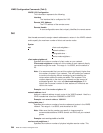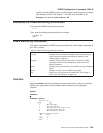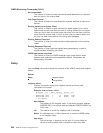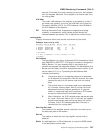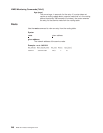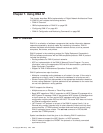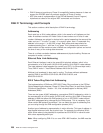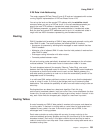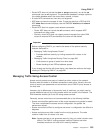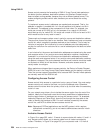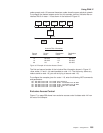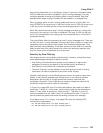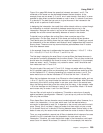
Area Routers
If the router is configured as an area router, it maintains a similar database for all of
the areas up to the maximum area, and can exchange area routing information with
other area routers. Areas are handled almost exactly the same as nodes, except
messages give costs to areas, but not nodes.
The areas concept results in two types of routing nodes:
v A level 1 router only knows about one area, so it keeps track of nodes in its area.
Also, it ignores adjacencies across areas.
v A level 2 router keeps an area routing database, and can have cross-area
adjacencies. Level 2 routers advertise routes to all other areas, so level 1 routers
send all foreign-area traffic to the level 2 routers.
End-nodes simply pass packets on to a router.
A level 2 router that can reach other areas advertises a route to node 0 within its
area. When level 1 routers need to send a packet to another area, they route it
toward the closest node 0. This is not necessarily the best route to that area. From
there, the level 2 routing algorithm sends the packet to its destination area.
Configuring Routing Parameters
In each system you can set the following routing parameters:
v Maximum number of nodes in the area
v Maximum number of routers adjacent to this router
v Maximum number of networks on any given node
v Maximum number of end-nodes one hop away from this end-node
v Cost of a hop on each network to which this node is attached
v Values of several timers involved in sending hello messages and expecting them
from other nodes
IBM’s Implementation of DNA IV
The main user interface program for the router’s implementation of DNA IV is called
NCP. The router’s NCP is a limited subset of the DECnet Network Control Program
(NCP) commands. The router’s NCP enables you to view and modify the various
operating arguments of DNA IV and to read various DNA-specific counters.
Some of the features of the router’s NCP include the following:
v NCP implements new entities: module access-control and module routing-filter.
v NCP has no set executor buffer size command because the router does not
originate any DECnet traffic. The router can forward the largest packet any
DECnet implementer can generate. It honors the buffer size restrictions of all
adjacent nodes.
v NCP allows an all qualifier on the node, area, and circuit subcommands.
The router NCP is similar to NCP on DECnet-VAX, with the following differences:
v Router NCP does not include the set node name command, and therefore
cannot assign names to nodes, or display node names with addresses.
Using DNA IV
252
MRS V3.2 Protocol Config Ref Vol 2



